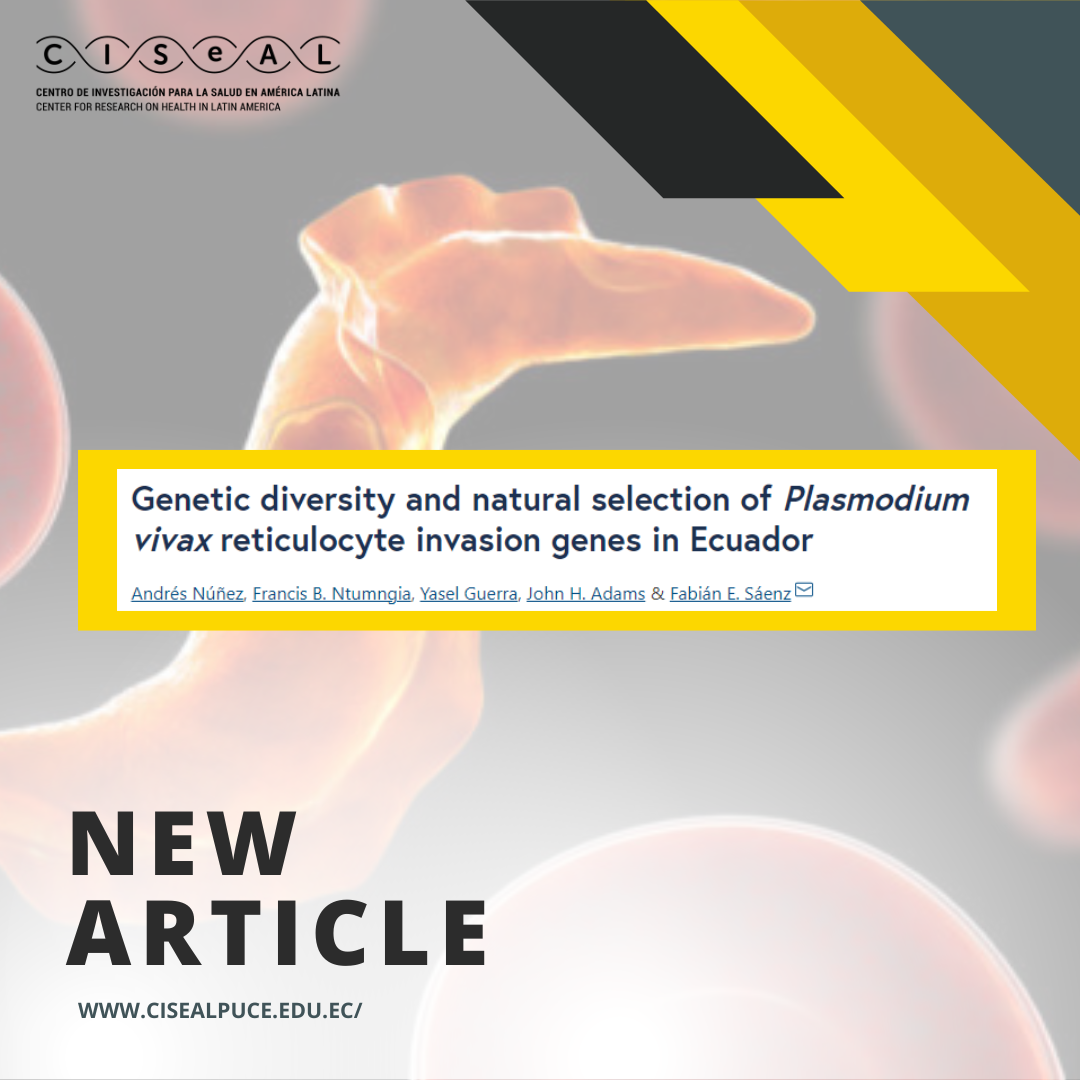
Malaria remains a global health challenge, with staggering statistics of approximately 247 million cases and 619,000 deaths reported in 2021. Plasmodium vivax is the predominant parasite in the Americas, particularly the Southern hemisphere, accounting for 64% of all malaria cases. Ecuador has made significant strides in malaria control, witnessing a remarkable 99% reduction in diagnosed prevalence over the past 15 years. In the article written by our researcher Fabián Sáenz and his colaborator: "Genetic diversity and natural selection of Plasmodium vivax reticulocyte invasion genes in Ecuador", it was discovered that while periodic outbreaks occur in coastal and perennial transmission in the Amazon, the disease mainly affects working-age men in rural areas.
The invasion of human reticulocytes by Plasmodium vivax merozoites is a dynamic, multi-step process involving initial attachment, apical orientation, junction formation, invasion, and membrane sealing. Key surface proteins such as Merozoite Surface Protein 1 (MSP1), Duffy Binding Protein (DBP), Reticulocyte Binding Protein 1a (RBP1a), and Apical Membrane Antigen 1 (AMA1) play pivotal roles in these stages.
MSP1, particularly its MSP119 fragment, facilitates initial attachment and has demonstrated immunogenicity, with antibodies against it inhibiting parasite growth. DBP and RBP1a are involved in orientation and binding, with DBP antibodies reducing invasion efficiency. Injunction formation, mediated by AMA1 and RON2, solidifies the merozoite-reticulocyte attachment. The final invasion phase involves motor-driven movement of the junction towards the posterior end of the merozoite, culminating in membrane sealing around the parasite.
Understanding the genetic diversity of these invasion-related proteins is vital for immunity and potential vaccine development. While insights into DBP genetic diversity exist for Colombia and Brazil, data on allele variation remain limited in the Americas. The study of Plasmodium falciparum and P. vivax diversity in Venezuela and Brazilian isolates highlights the implications of haplotype diversity in immune responses. A comprehensive analysis encompassing multiple genes (pvmsp1-42, pvdbpII, pvama1) in Mexican parasites revealed regional diversity and evolutionary influences on gene roles.
To bridge these knowledge gaps, comprehensive studies are required to ascertain gene diversity, distribution, and evolutionary impact. Ecuador's geography, divided into western Pacific and Amazonian regions by the Andes, presents an ideal platform to analyze allelic diversity in distinct malaria-endemic areas.
The present study's objective was to unravel the allelic diversity of four P. vivax invasion proteins (pvmsp1-19, pvdbpII, pvrbp1a-2, and pvama1) and assess how natural selection shapes this diversity in Ecuador. These findings hold promise in guiding future vaccine development efforts for both the region and the nation, addressing critical gaps in our understanding of malaria invasion and genetic diversity.
We invite you to read the full article here: Genetic diversity and natural selection of Plasmodium vivax reticulocyte invasion genes in Ecuador



